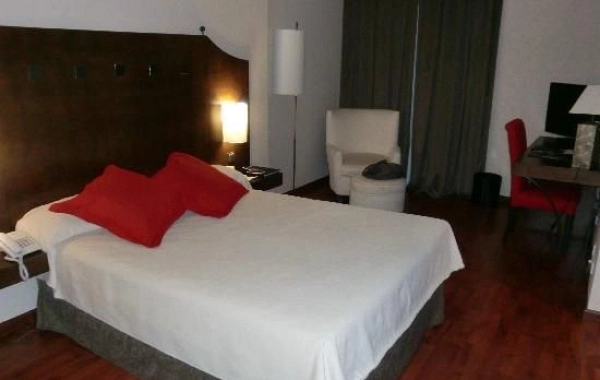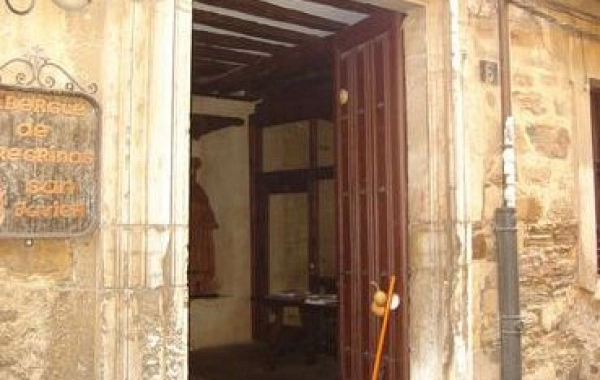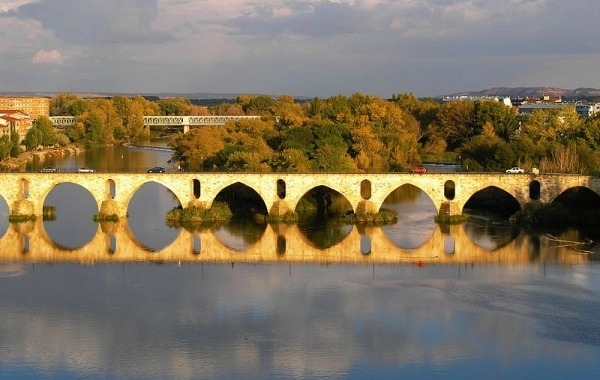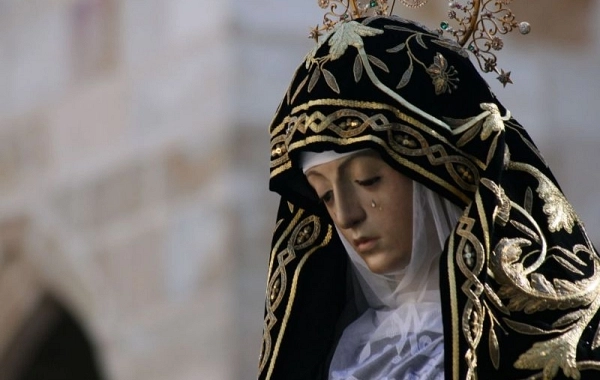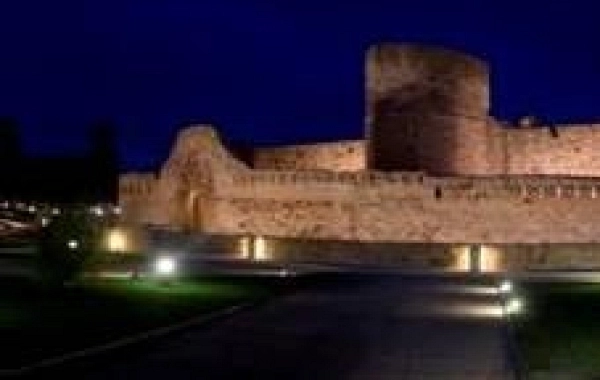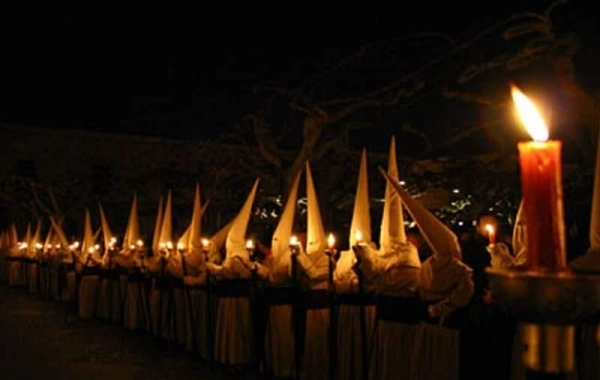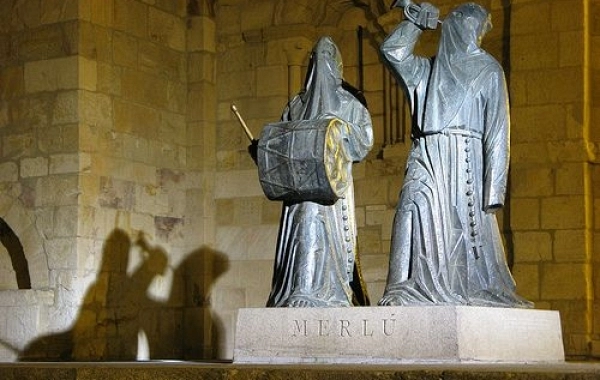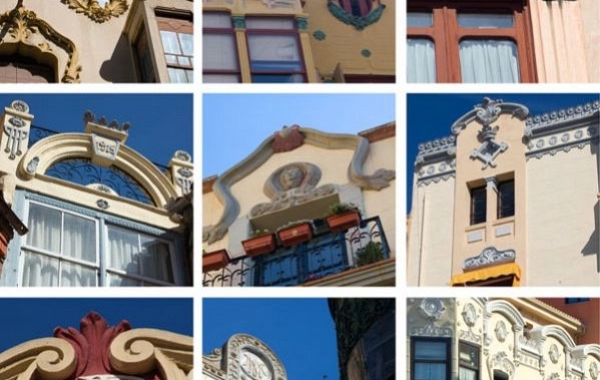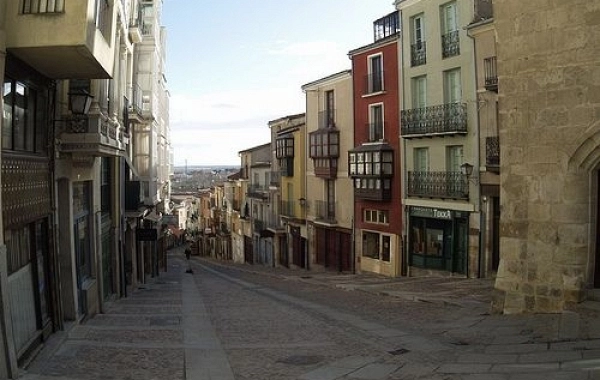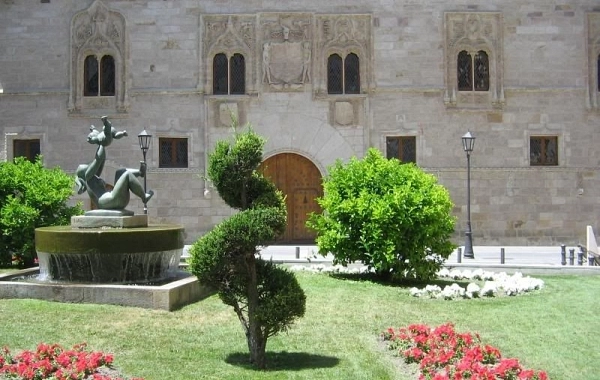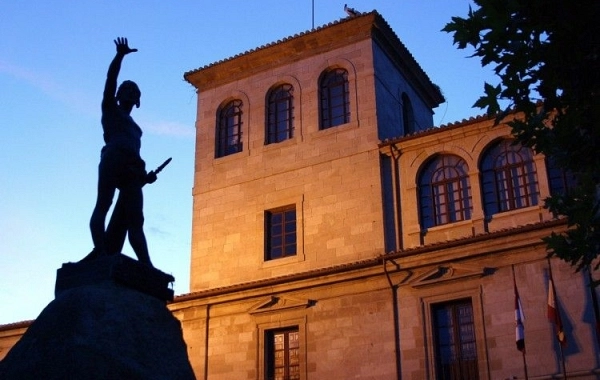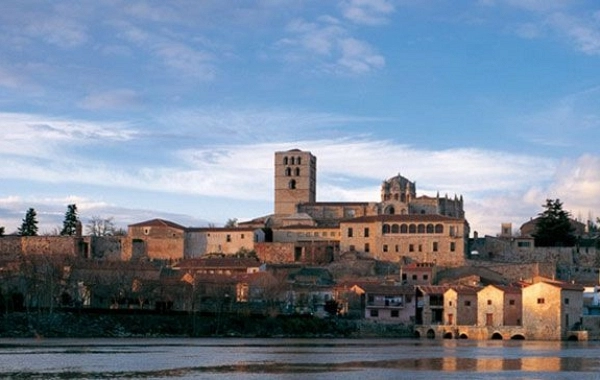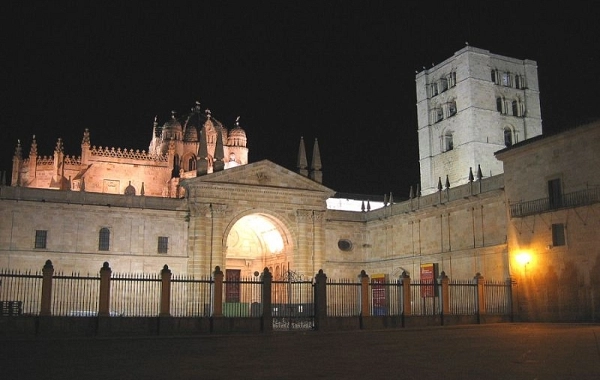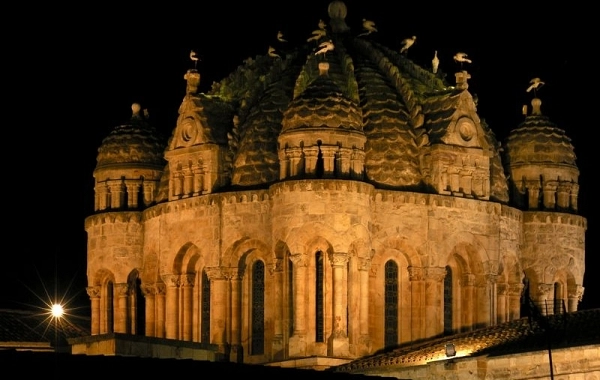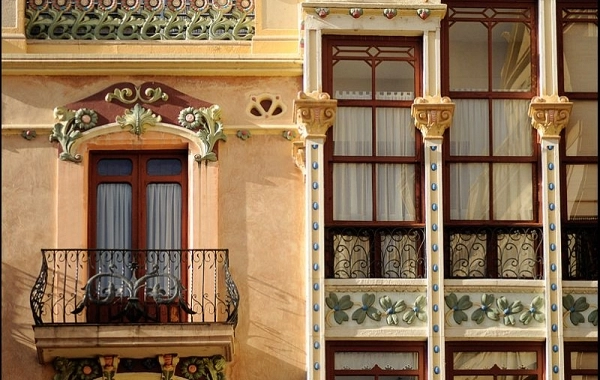VP20 - El Cubo de la Tierra del Vino - Zamora - 31,6 km
Distance32 Km.Related packages
Camino de Santiago: Stage towards Zamora
Leaving El Cubo de la Tierra del Vino
The route continues, leaving behind El Cubo de la Tierra del Vino. We take the old road and cross a bridge, then follow the ancient Roman road, which runs parallel to the railway for about five kilometers. From a nearby hill, we can admire the views of Villanueva de Campeán. We enter the town via Calzada Street, and then Santiago Street. Upon departure, a flat path takes us to San Marcial, a small village that we leave to the left before ascending a hill, from which we can already see Zamora. We arrive at this historic city through the San Frontis district, enjoying a stunning view of the cathedral.
The Entrance to Zamora: A Journey to the Past
At the edge of the Duero River, we skirt the remnants of the Roman bridge and enter the city through the medieval bridge. Zamora is a key city for pilgrims on the Camino de Santiago, especially for those traveling the Vía de la Plata. It was here, with the help of the Ramos de Castro Foundation, that this ancient pilgrimage route to Santiago de Compostela was revitalized.
Zamora: A Must-Visit Destination on the Camino
History and Heritage of Zamora
Zamora stands as a pivotal city in the history of the Vía de la Plata, being an important settlement already in Roman times. Located on a hill by the Duero River, its strategically walled position made it easily defensible. During the Middle Ages, its commercial prosperity and natural surroundings made it a key point for monarchs and merchants. The city's name, which refers to the "little eye" or "the little girl of the Duero's eyes," reflects the beauty and significance of this enclave.
What to See in Zamora: Romanesque Monuments and Temples
The Cathedral of the Transfiguration
Zamora is famous for having the most Romanesque temples in Europe. Among them stands the imposing Cathedral of the Transfiguration, built in the 12th century with a 17th-century cloister. Its Byzantine dome, which influenced the architecture of other cathedrals like Salamanca’s, is one of its most distinctive features.
Church of Santiago de los Caballeros
This 11th-century church, also known as the Church of Santiago el Viejo, has a historical connection to El Cid, as it is said that he was knighted in this temple.
Santa María la Nueva and the Holy Week Museum
At the Santa María la Nueva temple, built in the 12th century, the famous "Yacente," a 17th-century work, is housed. Also worth visiting is the Holy Week Museum, which celebrates one of the city's most important festivals, declared of International Tourist Interest.
Other Romanesque Churches and Civil Heritage
Zamora boasts several other Romanesque churches worth exploring, such as the Church of Santa María de la Horta, the Church of San Pedro y San Ildefonso, and the Church of San Cipriano. Furthermore, the city houses important civil buildings, such as the Casa del Cid and the Zamora Castle, offering magnificent views over the plain.
Recommended Visits in Zamora
Palaces and Museums of Zamora
For those wishing to dive deeper into the city's artistic wealth, don't miss the palaces of the Counts of Alba and Aliste or the Palacio de Los Momos. The museums of Zamora, such as the Ethnographic Museum of Castile and León, are also excellent options for gaining a better understanding of the region's history.
Cultural Heritage Sites
Among the monuments of greatest historical and cultural value are the Church of San Isidoro, the Church of Santa Lucia, and the Church of the Holy Spirit, as well as the Teatro Principal and several museums of art and heritage. The historic center of Zamora has been declared a Cultural Heritage Site, underscoring the importance of this city on the Camino de Santiago.
Stages
- VP01 Sevilla - Guillena , 22 km
- VP02 - Guillena - Castilblanco de los Arroyos - 19 km
- VP03 - Castilblanco de los Arroyos - Almadén de la Plata - 29,5 km
- VP04 - Almadén de la Plata-Monesterio - 34,5 km
- VP05 - Monesterio-Fuente de Cantos - 21,6 km
- VP06 - Fuente de Cantos - Zafra - 24,6 km
- VP07 - Zafra - Almendralejo - 36,7 km
- VP08 - Almendralejo - Mérida - 29,6 km
- VP09 - Mérida - Alcuéscar - 36 km
- VP10 - Alcuéscar - Valdesalor - 25,7 km
- VP11 - Valdesalor - Casar de Cáceres - 22,8 km
- VP12 - Casar de Cáceres - Cañaveral - 33,2 km
- VP13 - Cañaveral - Galisteo - 28 km
- VP14 - Galisteo - Cáparra - 29,5 km
- VP15 - Cáparra - Baños de Montemayor - 28,5 km
- VP16 - Baños de Montemayor - Fuenterroble de Salvatierra - 32,9 km
- VP17 - Fuenterroble de Salvatierra - San Pedro de Rozados - 28 km
- VP18 - San Pedro de Rozados - Salamanca - 23,4 km
- VP19 - Salamanca- El Cubo de la Tierra del Vino - 35 km
- VP20 - El Cubo de la Tierra del Vino - Zamora - 31,6 km
- VP21 - Zamora - Montamarta - 18,5 km
- VP22 - Montamarta - Granja de Moreruela - 22,7 km
- VP23 - Granja de Moreruela - Benavente - 25,5 km
- VP24 - Benavente - Alija del Infantado - 22,1 km
- VP25 - Alija del Infantado - La Bañeza - 20,5 km
- VP26 - La Bañeza - Astorga - 24,2 km




